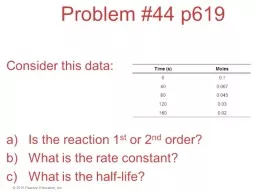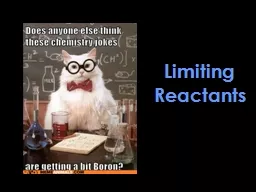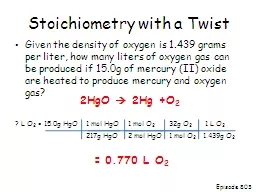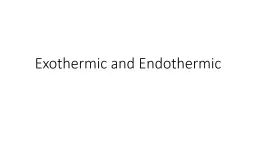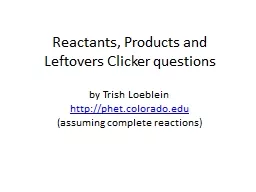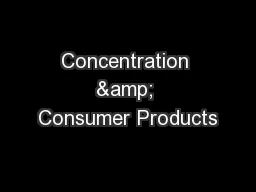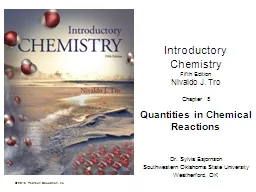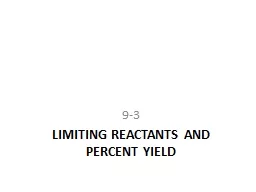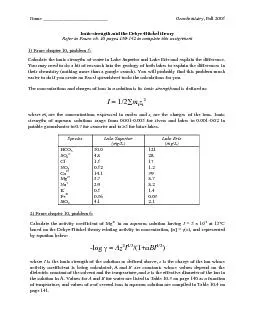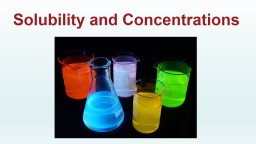PPT-Solution Analyze We are given the concentrations of a reactant at various
Author : sherrill-nordquist | Published Date : 2018-11-02
times during a reaction and asked to determine whether the reaction is first or second order Plan We can plot lnNO 2 and 1NO 2 against time If one plot
Presentation Embed Code
Download Presentation
Download Presentation The PPT/PDF document "Solution Analyze We are given the conce..." is the property of its rightful owner. Permission is granted to download and print the materials on this website for personal, non-commercial use only, and to display it on your personal computer provided you do not modify the materials and that you retain all copyright notices contained in the materials. By downloading content from our website, you accept the terms of this agreement.
Solution Analyze We are given the concentrations of a reactant at various: Transcript
Download Rules Of Document
"Solution Analyze We are given the concentrations of a reactant at various"The content belongs to its owner. You may download and print it for personal use, without modification, and keep all copyright notices. By downloading, you agree to these terms.
Related Documents

